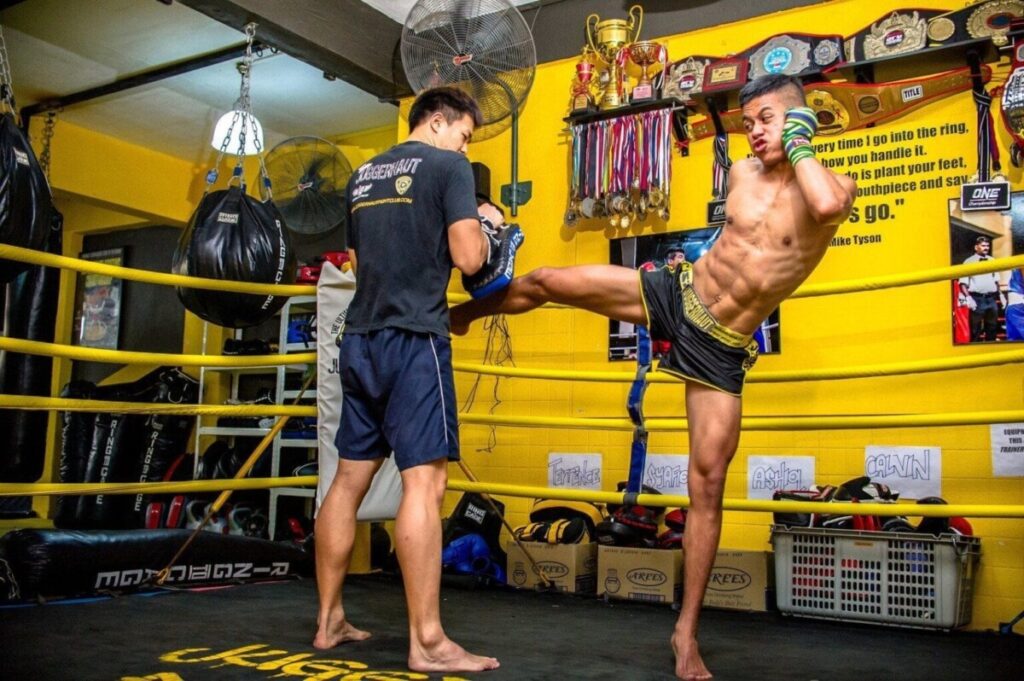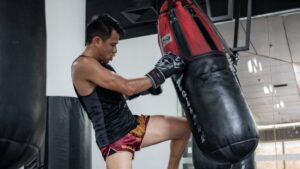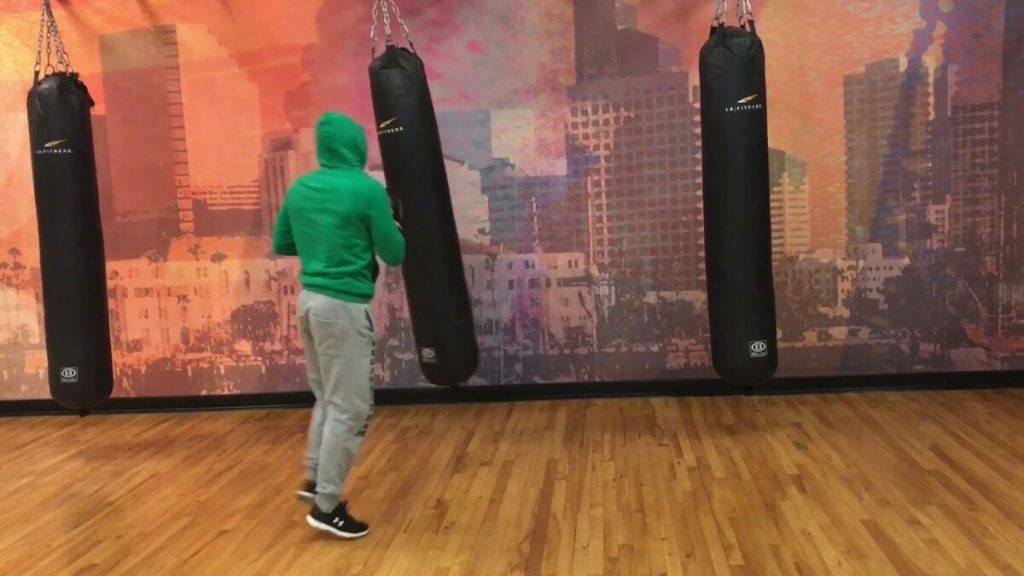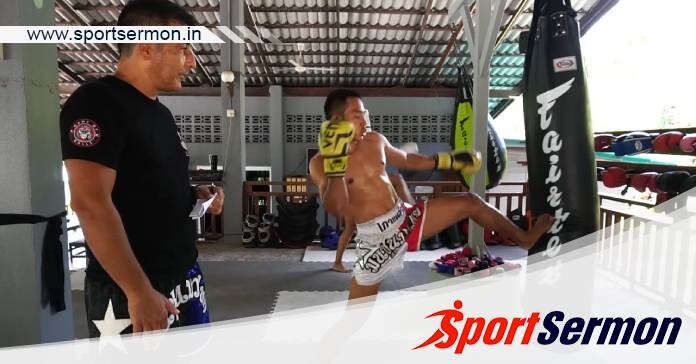Solo Muay Thai Exercises: There will surely be occasions when you must practice alone, even though Muay Thai is unquestionably a team sport and most of your training will be done in groups under the supervision of a qualified teacher.
Self-directed training, or practising techniques and exercises without the guidance of a coach, is a minor but typical component of a Muay Thai fighter’s preparation for combat. It’s also the easiest aspect of your training regimen to perform incorrectly. Without the proper technique and mentality, starting solo Muay Thai exercises is a definite way to form undesirable habits.
We made the decision to write this comprehensive guide on self-directed training with this in mind. The typical mistakes that people can make when exercising alone will be discussed in the following paragraphs along with suggestions on how to prevent them. Finally, we’ll outline some of the most important solo Muay Thai exercises and discuss how to get the most out of them.
Self-Directed Training’s Problem

The term alone reveals the usual problem with solitary training. It is by yourself. Nobody is present to correct you. Therefore, you run the risk of developing poor habits that are very hard to change if you happen to throw anything incorrectly without realising it. This is especially true if you practice alone a lot and don’t get the chance to get corrected. In the event that this occurs, you will be hindering your own growth because it takes longer to break negative habits than it does to form new ones.
You might also be interested in reading this: The Top 3 Lower Body Muay Thai Exercises
Ways To Prevent Reinforcing Mistakes
Ensuring that your drills are basic is a simple approach to prevent improper technique from becoming ingrained while you are exercising alone. Overdoing everything too quickly is a certain way to produce small blunders that grow into major issues over time.
Setting precise goals for each training session is essential while working on your skills independently. If you are working on too many things at once, it will be challenging to keep perfect form and poise. After deciding on a specific emphasis for the session, get started slowly and pay close attention to the essential components of each method you use before increasing the intensity.
Don’t immediately throw your shots as hard as quickly as you can, for instance, while you’re kicking. Take it easy at first, focus on hip rotation, landing on the balls of your feet, and starting and completing in the proper positions. After you can do them flawlessly at a leisurely pace, progressively raise the force and speed while still adhering to form.
When training alone, your phone’s camera may be a really useful tool. You may video yourself as you work on your own fitness using your camera. In between rounds, you may use this to get a “coach’s eye view” of your technique. It will help you see where you need to make improvements in your technique and identify any mistakes you could be making before they become second nature.
Drills of Balance on the Bag

In Muay Thai, balance is a critical ability. Without it, you are vulnerable to opponent sweep attempts and unable to deliver strong kicks. Fortunately, there are three extremely basic heavy bag drills you can do on your own to help you improve your balance. Make sure you start slowly with all of these workouts since they get harder as you increase the strength and pace of the action.
1) Kick Through Knee Guard
In this exercise, you are practising the manoeuvre you would use to break free from a fighter who has caught one of your body kicks and is attempting to sweep you. Just kick yourself in the torso, and as soon as it makes contact, turn your hip over to brace your shin over the bag in a horizontal manner.
2) Make a kick into the block
Kiewpayak Jitmuangnon, the world champion in muay thai, demonstrated a method that is easily adaptable for solo practice with a heavy bag. It takes exceptional balance and technique to hit a body kick and then turn that momentum into a flawless Muay Thai block. Return your leg to a powerful Muay Thai block without letting your foot contact the ground after delivering a body kick to the bag. As soon as you have mastered this technique, start to repeat it, kicking and blocking without pausing in between each block.
3) Push kick, or kick and transition into a teep
You kick first in this drill, and then you kick again. A teep is the transition from the second kick. After you have perfected your balance and made sure your teep accuracy is accurate, you may increase the challenge by combining it with earlier balancing drills. This entails making a fluid transition without pausing from a kick to a block to a teep.
Exercises for Cardio and Strength on the Heavy Bag

Essential exercises for self-directed Muay Thai training include the following drills. When you work out by yourself, you may utilise them to increase your cardio and endurance. That being said, if you approach them with the intention of doing them quickly without paying attention to technique, you will be doing yourself harm. It is crucial to begin slowly and ensure that you are reaching all of your performance points before increasing the intensity of your training, just like with the other self-directed training activities.
1) Squeezing the bulky bag
In order to strengthen their legs and develop their teeps, boxers frequently throw 200–300 teeps onto a heavy bag. There are a few crucial performance areas to concentrate on to make sure you are mastering this exercise and improving your technique, regardless of whether you are performing all of your teeps on one leg or switching between the two. Among them are the following:
- Be Precise: Always tamp the same area of the bag. Checking to see whether the bag doesn’t spin after you teep it is a wonderful technique to ensure that you are improving your accuracy. To clearly indicate where to aim their teep, many individuals may apply a sticker or label the bag with tape.
- Use Your Hips: The majority of your strength while teasing comes from your hips. Teeping is more than just the skill of lifting your leg and pressing it into your opponent’s tummy. Thus, always tuck your hips into every teep.
- Bend Back: To ensure that you are out of the line of any fictitious blows aimed at you, bend your head back as you extend your leg. By counterbalancing your teep, you avoid falling forward into an awaiting counter in the event that you miss.
2) Bending Over the Heavy Sack
Again, if you don’t handle this tried-and-true solo training practice appropriately, it is very simple to ingrain poor habits. Therefore, pay attention to the following whether you are performing intervals of 20 power knees at a sprint or a marathon run of 500+ knees without stopping:
- Knee To The Body: When you grow fatigued, it’s normal for your knees to start to stray south of the border, therefore you should aim for a location on the bag that is parallel to your belly button. Again, to make sure you are kneeling high enough, mark the appropriate height on the bag with some tape.
- Kick Your Legs Back: Keep in mind that only successful strikes count towards the scorecards in Muay Thai. You aren’t practising proper technique if all you are doing is kneeling on the bag. Before bringing your knee forward, make sure to generate force by kicking your leg behind you.
- Use Your Arms: Using your knees on the bag is a terrific way to develop your arms, which is something you should practice if you want to succeed in the clinch. As you stretch your leg behind you, make sure you are pushing the bag away and that you are grasping the edges of the bag at head height. Then, as you make your knees, draw it back into you.
3) Utilising shadowboxing
When left alone at home, anyone who has fallen victim to the Muay Thai bug will find themselves spontaneously engaging in a bout of shadowboxing. When you begin sparring with an imaginary opponent, it’s crucial to maintain technique and ringcraft in mind even if it’s simple to become engrossed in the excitement of moving around and throwing techniques for fun. So bear the following in mind the next time you shadowbox by yourself.
- Visualise: Try to see yourself using the precise moves and exercises you have done in training on an unseen opponent while you are shadowboxing. Think about their movements and the cues your opponent will use to get you to execute the moves you want to use in the ring.
- Keep It Realistic: Avoid making shots only for the sake of making shots. Only ingrain the combos you want to utilise in the ring and keep in mind the ranges of each of your weapons.
- To be More Precise: You don’t have to shadowbox every one of your eight weapons at once. You are limited to analysing just your flaws by breaking things down. Therefore, if your teacher has advised you to focus on your footwork, just picture how you should move in the ring with your opponent instead of diverting your attention with fancy hand and elbow combinations.
In summary
Whatever degree of talent you have, the aforementioned drills will help you get better in Muay Thai. Solo muay thai exercises training has a tonne of advantages, and you may practise a lot of different solo training exercises. Just keep in mind that self-directed training can only help you advance if you remember to start off slowly and keep your attention on technique.
These are the Must-Do solo Muay Thai exercises for all skill levels. Let us know your thoughts in the comment section below.

